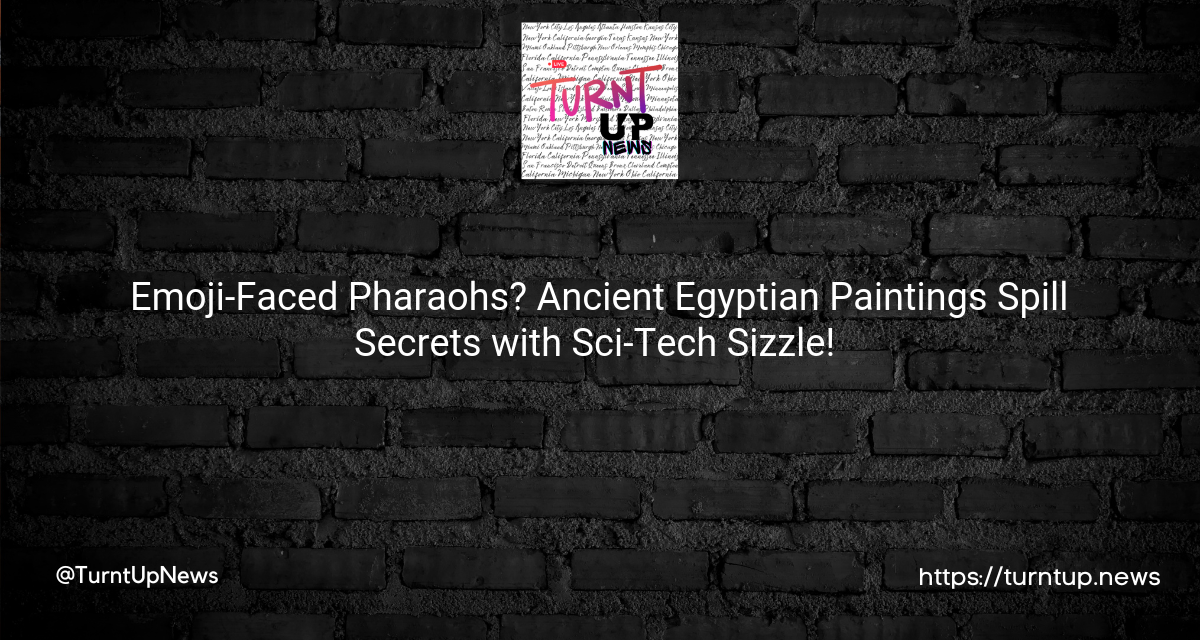🎨🔬 Emoji-Faced Pharaohs? Ancient Egyptian Paintings Spill Secrets with Sci-Tech Sizzle! 🧪🔍
TL;DR: A recent study pulled back the curtains on ancient Egyptian paintings that are 3,000 years old, revealing a hidden art world filled with surprises. Thanks to cutting-edge chemical imaging technology, researchers discovered unseen alterations and broke new ground by carrying out analysis right in the tombs! Get ready to unlearn what you thought you knew about Egyptian art. Is that a Mona Lisa of Egypt we see? 🧐🖼️
The sands of time are blowing away in the Theban Necropolis as researchers use chemical imaging to uncover secret details in two ancient Egyptian paintings. These aren’t your casual doodles from 3,000 years ago, these are artistic masterpieces located in the chill zone of the tombs where folks once gathered to honor their dearly departed. 🪦💀
Now, put on your nerd glasses because here comes the tech talk! 🤓 The researchers identified some interesting artistic twists in the paintings using portable chemical imaging technology. Bet you’re wondering why that’s special, right? Well, here’s the thing: most studies of this kind are done in the stuffy confines of labs or museums. But these folks said, “Nah, we’re taking this party to the tombs!” 🧪🎉
According to Philippe Martinez, an Egyptologist from the Sorbonne University in Paris and lead author of the study, “The way these works of art have been dealt with before has been mainly, purely analog, and they have been somewhat taken for granted — nobody has been really looking at them from the point of view of the artists.” 🧐🎨
Enter the world of chemical imaging technology, where X-rays become artists, mapping the painting down to the molecular level, including its chemical properties. Ever imagined a painting under ultraviolet or infrared light? This tech does that too, revealing stuff even the sharpest human eye can’t see! 😮🔬
The researchers brought their tech toys to two tombs from the Ramesside Period (1292 BC to 1075 BC) and discovered a world that we never knew existed! Is there a plot twist? You bet there is! 👀
One painting is from the tomb chapels of Menna, a high-ranking official under pharaoh Amenhotep III. Martinez dubbed it “the Mona Lisa of Egypt” 🇪🇬🖼️. The painting has Menna and his wife adoring Osiris, one of ancient Egypt’s most significant gods, with Menna raising his hands in front of his face. But wait, there’s more – a third hand, hidden under the white background layer! It’s like a secret handshake, only this one might reveal how the ancient Egyptians worked on their paintings. 🖐️🤔
The other painting is tucked away in the tomb of Nakhtamun, a cleric. It shows pharaoh Ramesses II with various alterations to his crown, necklace, and other royal swag – probably due to changes in symbolic meaning over time. There’s also a budding beard on Ramesses II – not something you see on Egyptian superheroes every day. Were they going for a more down-to-earth look? 🧔👑
From a hidden hand to an unexpected stubble, these findings challenge what we think we know about ancient Egyptian art. As Martinez said, “We have to relearn the Egyptian paintings and look at them in a new way.” Digital tools also expedite the process that usually takes a decade or more – making it easier to document these masterpieces whether they’re in mint condition or showing their age. 🗓️🏺
Here’s a question to ponder: Are we ready to let go of centuries-old assumptions and explore this ancient civilization with fresh eyes? And what other surprises are hiding in plain sight? 🤯🔎





